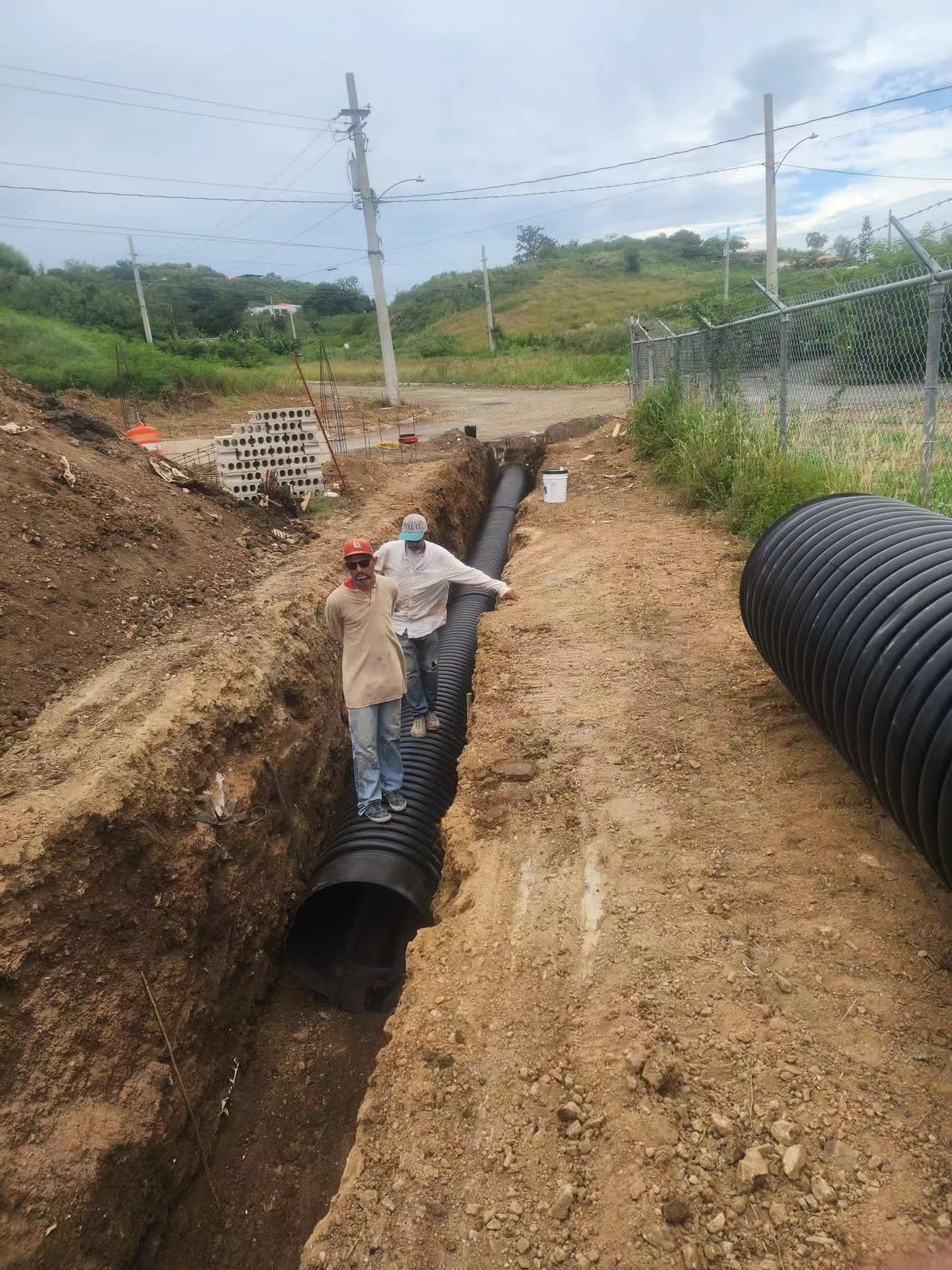OEM factory offers plum bing supplies with your own private label
 shentong
shentong  2025-03-11
2025-03-11
Shijiazhuang Shentong Plastic Industry Co., Ltd. specializes in the production of plastic pipes. In the previous introduction, we had a preliminary understanding of double wall corrugated pipes, but in practical applications, there is still a lot of knowledge that we need to learn. Today we will introduce the application of double wall corrugated pipes in construction, hoping to help everyone.

Engineering plan
Familiar with design drawings and materials, understand the pipeline layout, direction, process flow, and construction and installation requirements of the main and branch pipes. Familiarize yourself with the on-site situation and understand the distribution of existing plane and elevation control points along the designed pipeline. Based on the pipeline plan and existing control points, combined with the actual terrain, organize the measured data and draw the measured sketch. After entering the site, retest the benchmark and traverse points handed over by the construction unit. After the closure error meets the design requirements, densify the traverse points and traverse points. There is a benchmark within every 60 meters, and the densification points must undergo closure adjustment. The closure error of the benchmark points is 20 √ L to ensure the accuracy of the densification points and meet the accuracy of drainage pipe elevation and line control. Due to the fact that the central line stake of the pipeline needs to be excavated during construction, construction control stakes should be set up in places that are not affected by construction interference, easy to measure, and easy to protect. The central line direction control stakes should be measured using the extension line or wire method, and the position control stakes of auxiliary structures should be measured using the intersection method or parallel line method. The measurement during the construction process mainly involves determining the elevation of the trench bottom. After mechanical excavation, machine following measurement is used to prevent over excavation and ensure that the elevation of the trench bottom meets the design requirements. After pipeline installation, retesting is carried out to promptly handle any problems found, so as to control the elevation of the trench bottom within the allowable deviation range. Before the start of each day's measurement work, adjacent leveling review measurements must be carried out. The center of the pipeline is determined by the centerline control pile, which is used to drive a boundary line on the pipeline foundation to determine the laying position of the pipeline. The elevation of the well chamber shall be controlled according to the design requirements. After the pipeline is laid, the completion review measurement of the pipe top and structure shall be carried out. Trench excavation and foundation treatment: Familiarize yourself with the drawings, measure, locate, and set out according to the benchmark and coordinate control points provided in the design, and introduce temporary benchmark and control piles. Trench excavation can only be carried out after being reviewed and approved by the supervising engineer. The project adopts excavators for excavation, and the excavation depth and pipeline centerline should be strictly controlled during trench excavation. A margin of 20cm should be left for mechanical excavation, and the trench should be manually cleared to the designed elevation of the trench bottom, and the mileage pile should be led to the trench bottom. Strictly control the slope coefficient of trench excavation, excavate the width according to the designed slope coefficient, pay attention to the soil quality of the trench during excavation, and if necessary, ask the on-site supervisor, Party A, and design representative to determine the slope coefficient to prevent collapse of the trench edge. The earthwork excavated from the trench shall be directly loaded and transported outside, and the transportation location shall be designated by the owner. When encountering groundwater during trench excavation, drainage ditches and sumps should be set up, and timely drainage and precipitation of groundwater within the trench should be carried out. Foundation reinforcement measures such as laying a layer of pebbles or crushed stones (with a thickness of no less than 100mm) should be taken first; When there is no groundwater, the plain soil under the foundation is compacted with a compaction coefficient greater than 0.95; When encountering soft foundations such as silt and miscellaneous fill, graded Gobi soil shall be used for replacement according to pipeline treatment requirements; The replacement thickness is 30cm. After excavating the trench for about a hundred meters, manually clearing the trench with earthwork and passing the inspection of the supervising engineer, the next process of construction can be carried out in the trench.